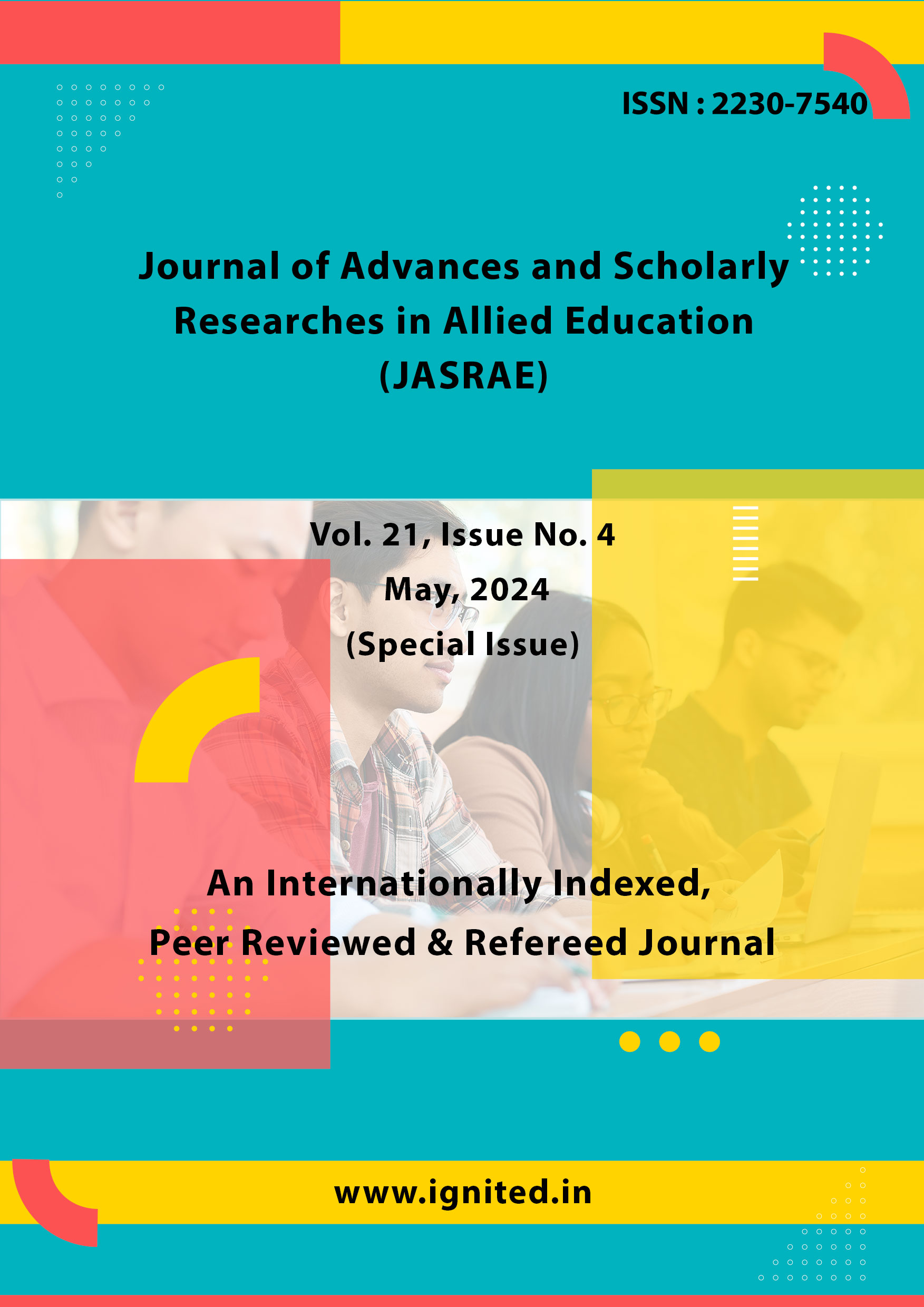An Analysis of the Provisions of Indian Labour Laws Pertaining to Women and their Implementation
DOI:
https://doi.org/10.29070/3m8tqn10Keywords:
Women, Labour Laws, Provisions, IndianAbstract
The gender-specific provisions of Indian labour laws are examined in depth in this article, and the article also evaluates the degree to which these sections are effectively implemented in various sectors of the economy. A robust structure has been established in India with the purpose of advancing gender equality and protecting the rights of women in the workplace. There are statutes such as the Equal Remuneration Act and the Maternity Benefit Act, as well as more contemporary employment regulations, that are included in this framework. However, women continue to face significant impediments in the form of legal and institutional barriers. The study has shed light on a number of significant challenges, some of which include the absence of legislative protections for women who are employed in informal sectors, the slack enforcement of existing legislation, and the marginalisation of unpaid care employment. Additionally, the study investigates the effects of recent modifications to the labour code from the point of view of gender, notably focussing on how these modifications have an impact on wage equality, social security, and workplace safety inside the workplace. Through the use of legal texts, secondary data, and court precedents, the purpose of this research is to facilitate the creation of Indian labour laws that are more inclusive, effective, and attentive to the realities of women workers. In doing so, it draws attention to significant gaps between the policy purpose and actual practice and offers potential remedies.
References
Dewan, Ritu. 2019. “Invisible Work, Invisible Workers: The Sub-Economies of Unpaid Work and Paid Work.” Action Aid and UN Women.
Mazumdar, Indrani, and N. Neetha. 2020. “Gender Dimensions: Employment Trends in India, 1993-94 to 2009-10.” http://archive.nyu.edu/handle/2451/34239.
Sudarshan, Ratna M. 2021. “Enabling Women’s Empowerment.” ILO Asia- Pacific Working Paper Series. DWT for South Asia and Country Office for India, International Labor Organization. http://www.ilo.org/wcmsp5/groups/public/---asia/---ro-bangkok/---sronew_delhi/documents/publication/wcms_324624.pdf.
Rawal, Vikas, and Partha Saha. 2020. “Women’s Employment in India: What Do Recent NSS Surveys of Employment and Unemployment Show?” Statistics on Indian Economy and Society. http://archive.indianstatistics.org/misc/women_work.pdf.
Naidu, Sirisha C. 2022. “Less Work Is More Work: Female Labour Force Participation and Reproduction in India.” Economic and Political Weekly. https://works.bepress.com/sirisha_naidu/25/download/.
Ghosh, Jayati. 2021. “Gendered Labor Markets and Capitalist Accumulation.” The Japanese Political Economy 44 (1–4): 25–41. https://doi.org/10.1080/2329194X.2019.1613899.
Chandrasekhar, C P, and Jayati Ghosh. 2019. “India Is Failing Her Young Women Even in Terms of Work.” Business Line, December, 5.
IWWAGE. 2020a. “Female Labour Force Participation Rate and Earnings Gap in India.” Initiative for What Works to Advance Women and Girls in the Economy. https://iwwage.org/wp-content/uploads/2020/07/India.pdf.
Nikore, Mitali. 2019. “Where Are India’s Working Women? The Fall and Fall of India’s Female Labour Participation Rate.” South Asia@LSE (blog). October 22, 2019. https://blogs.lse.ac.uk/southasia/2019/10/22/where-are-indias-working-women-the-fall-and-fall-ofindias-female-labour-participation-rate/
Zaidi, Mubashira, Shraddha Chigateri, Deepta Chopra, and Keetie Roelen. 2019. “‘My Work Never Ends’: Women’s Experiences of Balancing Unpaid Care Work and Paid Work through WEE Programming in India.” IDS Working Paper 2017 (494)
Raveendran, Govindan, and Joann Vanek. 2020. “Informal Workers in India: A Statistical Profile.” WIEGO Statistical Brief, no. 24 (August): 16
Conaghan, Joanne. 2019. “Gender and the Labour of Law.” In Philosophical Foundations of Labour Law, edited by Hugh Collins, Gillian Lester, and Virginia Mantouvalou, 17. Philosophical Foundations of Law. Oxford University Press.
International Labour Office. 2020. Non-Standard Employment around the World: Understanding Challenges, Shaping Prospects. Geneva: International Labour Organisatio
Chen, Martha Alter. 2021. “The Informal Economy: Definitions, Theories and Policies.” WIEGO Working Paper No 1. Manchester: Women in Informal Employment: Globalising and Organising
National Commission on Self Employed Women and Women in the Informal Sector. 2019. “Shramshakti Report.” New Delhi: National Commission on Self Employed Women.
Landau, Ingrid, Petra Mahy, and Richard Mitchell. 2018. “The Regulation of Non-Standard Forms of Employment in India, Indonesia and Viet Nam.” Conditions of Work and Employment Series No. 63. Geneva: International Labour Organisation. https://doi.org/10.1163/2210-7975_HRD-4022-2015053.
National Commission for Enterprises in the Unorganised Sector. 2018. “Report on Conditions of Work and Promotion of Livelihoods in the Unorganised Sector.” New Delhi: National Commission for Enterprises in the Unorganised Sector.
Papola, T S. 2019. “Role of Labour Regulation and Reforms in India: Country Case Study on Labour Market Segmentation.” Employment Working Paper 147. Geneva: Economic and Labour Market Analysis Department, International Labour Office.
National Advisory Council. n.d. “Recommendations on Occupational Health and Safety of Workers in India.”
Ferus-Comelo, Anibel. 2017. “Taking Care of Business: Childcare in Bangalore’s Apparel Industry.” Bangalore: Cividep - India
Savitri Ray and Madhuri Karak. n.d. “Women in NREGA: Issues of Child Care, Case Studies from Rajasthan and Uttar Pradesh.” New Delhi: Forum for Creche and Child Care Services.
Upadhyaya, Himanshu. 2020. “The Missing National Social Security Funds for India’s Unorganised Sector Workers.” The Wire, May 28, 2020. https://thewire.in/labour/national-social-security-fundunorganised-workers.
Sankaran, Kamala, and Roopa Madhav. 2017. “Legal and Policy Tools to Meet Informal Workers’ Demands: Lessons from India.” Wiego Legal Brief No 1. Women in Informal Employment: Globalising and Organising.
Sankaran, Kamala. 2017. “Labour Laws in South Asia: The Need for an Inclusive Approach.” Labour Law and Decent Work in Low-Income Settings. Geneva: International Institute for Labour Studies, International Labour Organisation.
Shyam Sundar, KR. 2018. “Second National Commission on Labour: Not Upto the Task.” Economic and Political Weekly 35 (30). https://www.epw.in/journal/2000/30/commentary/secondnationalcommissionlabour.html.
Sood, Atul. 2020. “The Silent Takeover of Labour Rights.” The India Forum, November 16, 2020. https://www.theindiaforum.in/article/silent-takeover-labour-rights.
Press Information Bureau. 2017. “The Code on Wages Bill 2017.” Ministry of Labour and Employment, Government of India
Chandru, K. 2020. “A Wage Code That Is a Hasty Composition.” The Hindu, September 30, 2020, sec. Lead. https://www.thehindu.com/opinion/lead/a-wage-code-that-is-a-hastycomposition/article32726499.ece.
Working Peoples’ Charter. 2017. “General Memo on the Labour Code on Wages Bill, 2017.” Unpublished











